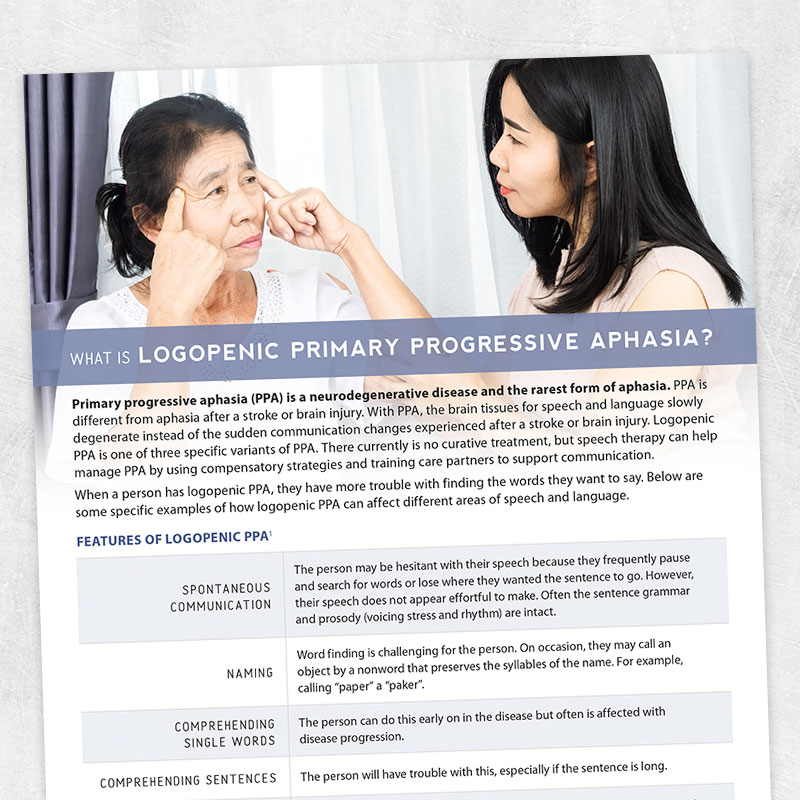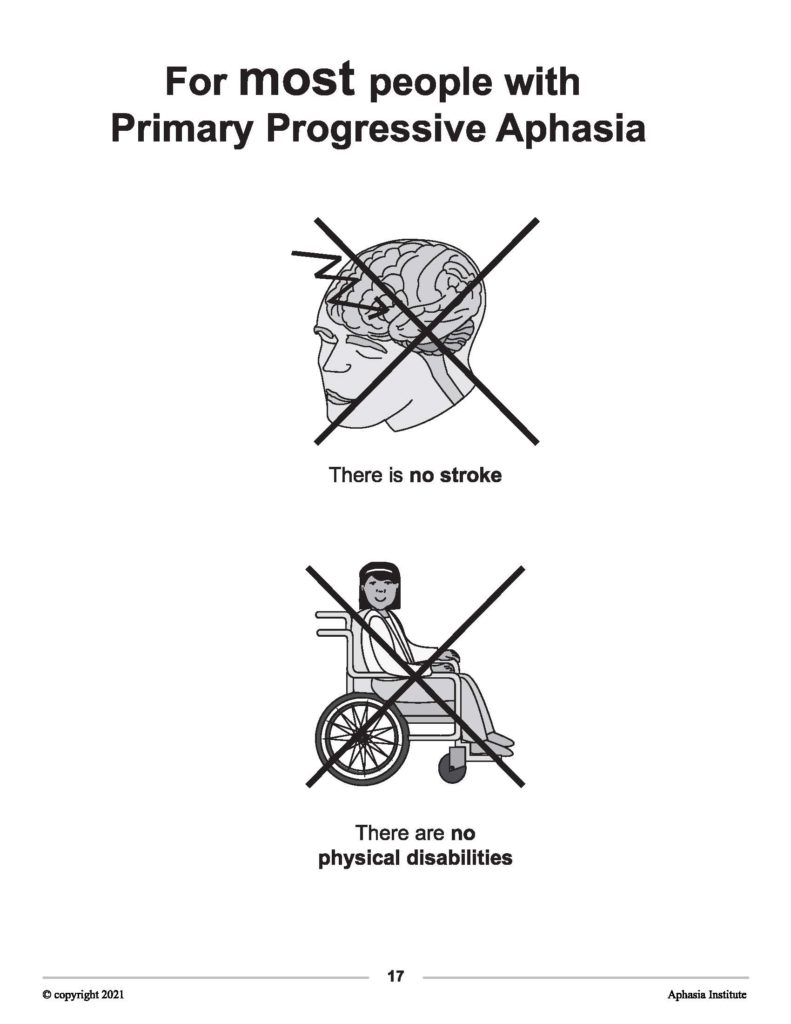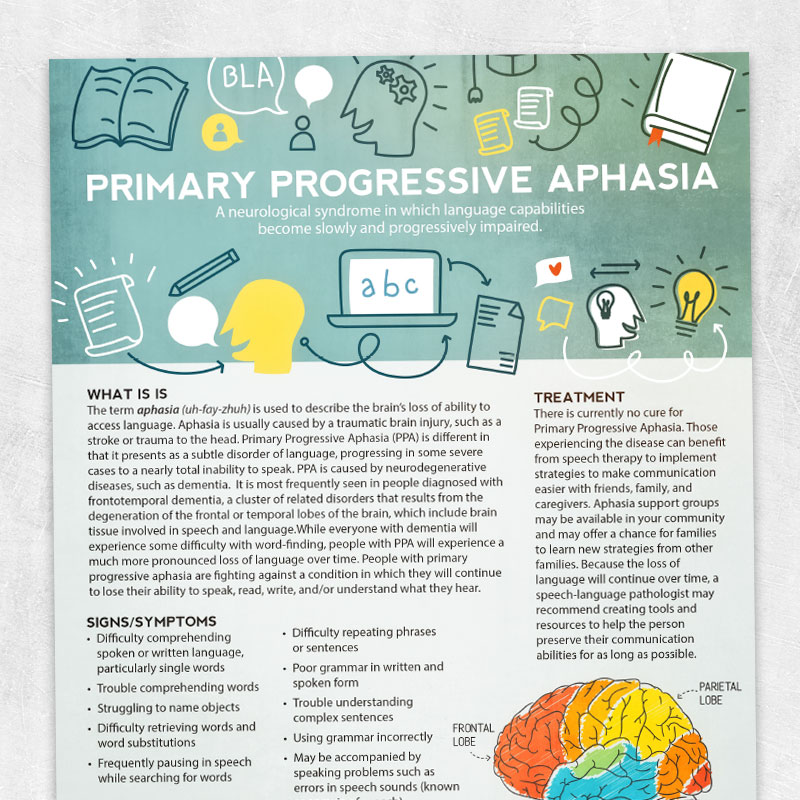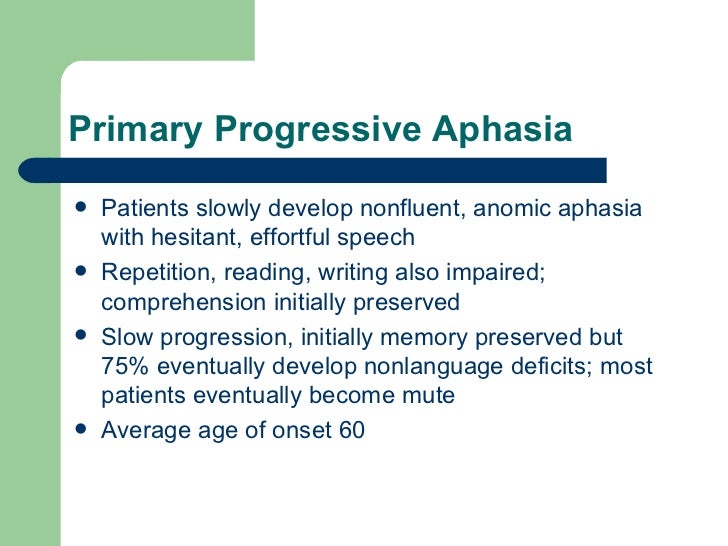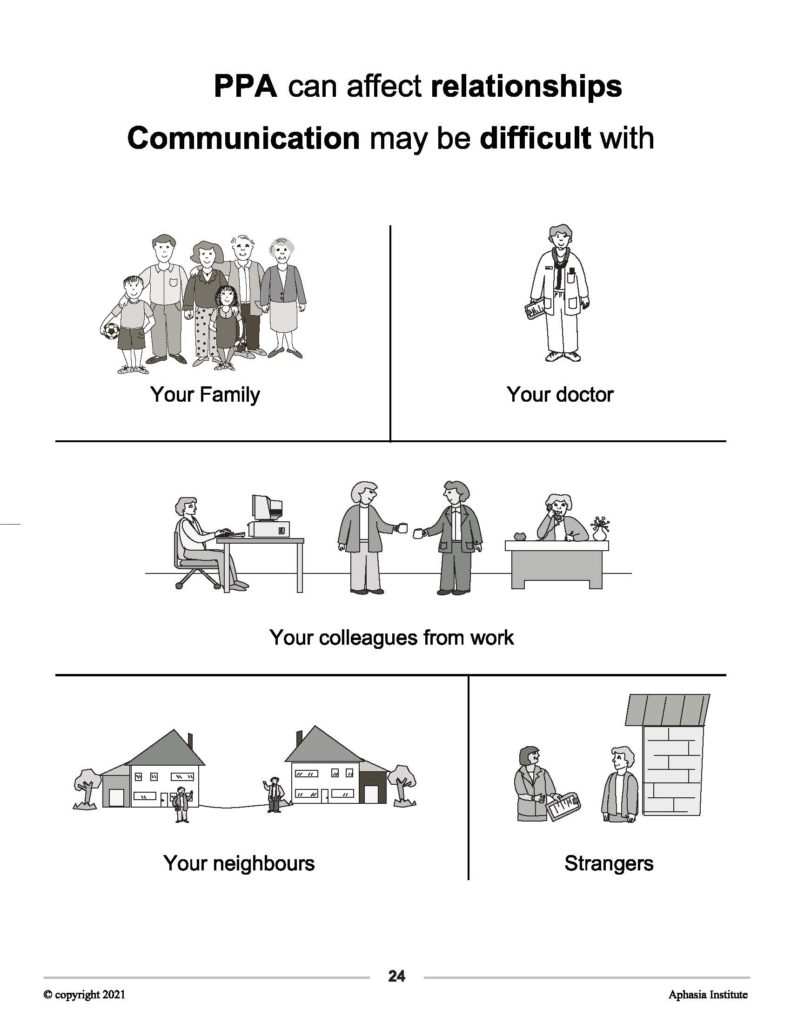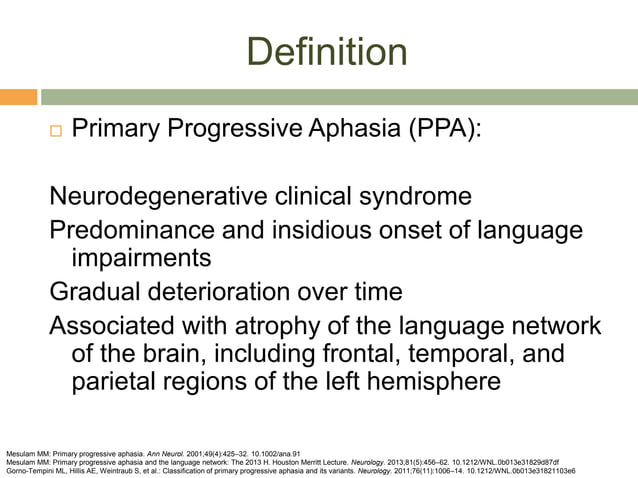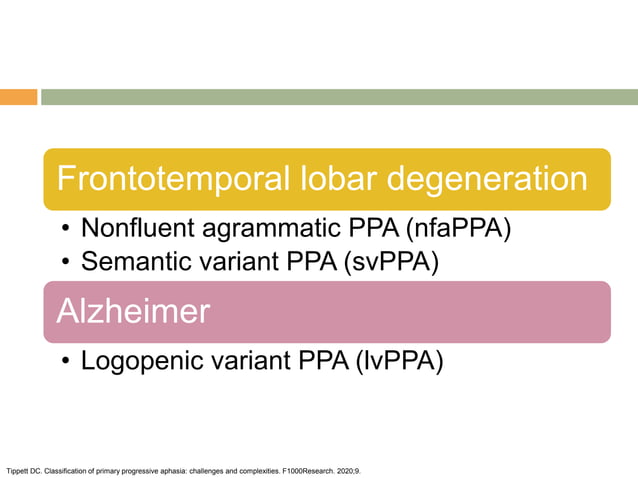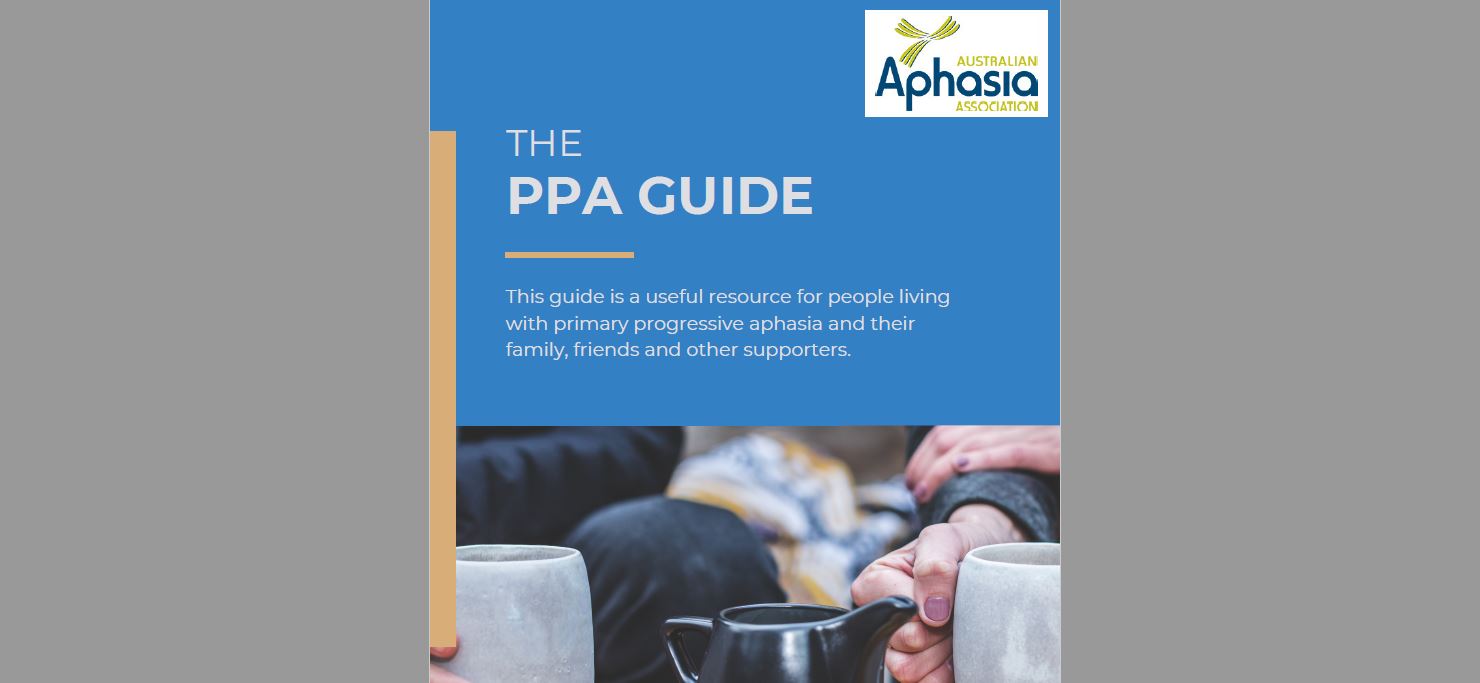New Treatments For Primary Progressive Aphasia

The morning sun streamed through the window of the speech therapy clinic, illuminating dust motes dancing in the air. Sarah, a vibrant artist known for her captivating landscapes, sat across from her therapist, Emily. Once, Sarah's words flowed like a river, painting pictures as vivid as her canvases. Now, they trickled, hesitant, as if navigating a labyrinth, a cruel consequence of Primary Progressive Aphasia (PPA). But today, there was a spark of hope in Sarah's eyes, fueled by whispers of new treatments, glimmers of light in what had seemed like an encroaching darkness.
This article explores the emerging landscape of treatments for Primary Progressive Aphasia (PPA), a devastating neurodegenerative condition that slowly erodes a person's ability to communicate. While a cure remains elusive, recent research offers encouraging avenues for managing symptoms, slowing progression, and improving the quality of life for individuals and families affected by this challenging disorder.
Understanding Primary Progressive Aphasia
PPA isn't a single disease, but rather a group of neurodegenerative syndromes that primarily affect language abilities. Unlike aphasia caused by stroke or traumatic brain injury, which often appears suddenly, PPA develops gradually, worsening over time.
This insidious progression makes early diagnosis crucial, yet challenging. Often, initial symptoms are subtle: difficulty finding the right words, struggling to understand complex sentences, or making grammatical errors.
There are three main variants of PPA: Semantic, Logopenic, and Nonfluent/Agrammatic. Each variant impacts different aspects of language.
The Three Variants
Semantic PPA involves a decline in the understanding of word meaning and object recognition. Individuals with this variant may struggle to name familiar objects or understand the meaning of words, even though they can still speak fluently.
Logopenic PPA is characterized by slow speech, word-finding difficulties, and impaired sentence repetition. Grammar and word comprehension are relatively preserved, but retrieving the right words becomes a laborious process.
Finally, Nonfluent/Agrammatic PPA features hesitant, effortful speech with grammatical errors and difficulty forming sentences. Comprehension is generally intact, but speaking becomes a frustrating exercise in linguistic construction.
Current Treatment Approaches: A Foundation of Support
Currently, there is no cure for PPA, and no medications have been specifically approved to halt or reverse its progression. However, a range of therapeutic interventions can significantly improve communication skills and quality of life.
Speech-language therapy (SLT) is the cornerstone of PPA management. SLT focuses on maintaining and improving communication abilities through exercises targeting word retrieval, grammar, and comprehension.
Compensatory strategies are also taught, such as using gestures, writing, or drawing to communicate when spoken language fails. Assistive communication devices (AAC), like tablets with specialized software, can further augment communication.
Emerging Therapies: A New Dawn?
While traditional therapies offer valuable support, researchers are actively exploring novel treatments to target the underlying neurodegenerative processes in PPA. These investigations offer a glimmer of hope for slowing disease progression and preserving cognitive function.
Cognitive Training Programs
Researchers are investigating the effectiveness of targeted cognitive training programs designed to strengthen specific language skills. These programs often involve repetitive exercises aimed at improving word retrieval, sentence comprehension, or grammatical accuracy.
Some studies suggest that these programs can lead to modest improvements in language abilities, particularly when combined with traditional speech therapy. The key is to personalize the training to the individual's specific needs and challenges.
Transcranial Magnetic Stimulation (TMS)
TMS is a non-invasive brain stimulation technique that uses magnetic pulses to stimulate specific areas of the brain. In the context of PPA, TMS is being explored as a way to enhance language function by modulating brain activity in regions involved in speech and language processing.
Early studies suggest that TMS may improve word retrieval and fluency in some individuals with PPA. However, more research is needed to determine the optimal stimulation parameters and identify which patients are most likely to benefit.
Pharmacological Interventions
While no drugs are currently approved to treat PPA, researchers are investigating several pharmacological approaches. Some studies are exploring the potential of drugs that target specific proteins implicated in neurodegeneration, such as tau and amyloid.
Other research is focusing on drugs that enhance cognitive function or reduce inflammation in the brain. While results have been mixed, these investigations provide valuable insights into the underlying mechanisms of PPA and pave the way for future drug development.
The Power of Support Groups
Living with PPA can be incredibly isolating and emotionally challenging, not only for the individual affected but also for their families. Support groups provide a vital source of connection, information, and emotional support.
These groups offer a safe space to share experiences, learn coping strategies, and connect with others who understand the unique challenges of PPA. Caregiver support groups are equally important, providing resources and emotional support for those who are caring for loved ones with the condition.
Looking Ahead: A Future of Hope
The field of PPA research is rapidly evolving, with new discoveries being made every year. Advances in neuroimaging, genetics, and drug development are providing a deeper understanding of the disease and paving the way for more effective treatments.
While a cure for PPA may still be years away, the emerging therapies offer a glimmer of hope for slowing disease progression and improving the quality of life for individuals and families affected by this devastating condition. The journey is undoubtedly challenging, but with continued research, innovative treatments, and unwavering support, the future holds the promise of a brighter tomorrow.
As Sarah left the clinic that day, the sunlight seemed a little brighter. The road ahead remained uncertain, but the whispers of new treatments had planted a seed of hope, a reminder that even in the face of profound challenge, the human spirit endures, seeking connection and meaning in a world that sometimes feels increasingly silent. The fight continues, fueled by compassion, innovation, and the unwavering belief in the power of communication.
